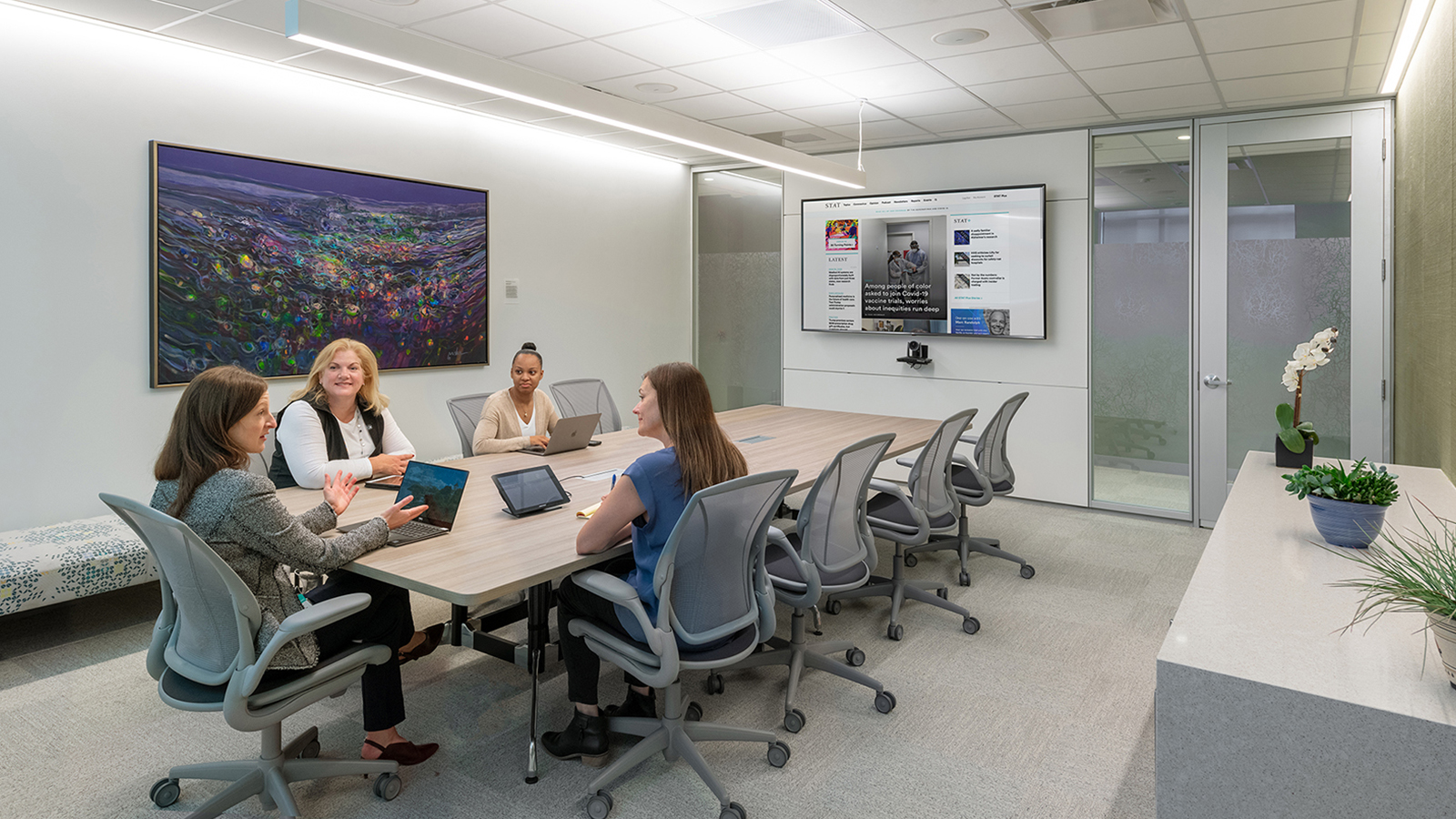Rose Mary Su
Labs + Sensitive Facilities | Market Leader
Principal

Trends in corporate office design are constantly evolving. The start-up world has been at the forefront of occupying open plan workspaces that allow for more collaboration.
To open or not to open, that is one of the key components in stimulating a collaborative work environment. But it’s not just the physical space that allows for collaboration, but also the technology involved to help promote such efforts. Advances in technology have enabled meetings to happen remotely without a significant investment in proprietary videoconferencing equipment.
Offices across the country or even across the world can now easily communicate and collaborate thanks to all of these advances. Technologies such as GoTo Meeting and Skype for Business are inexpensive and relatively intuitive for most users. These systems are integrated into Microsoft Outlook calendar and do not require an external component beyond a computer and a phone. Meetings can be held almost anywhere — even at home or in a café — as long as there is an Internet connection. Employees can host and participate in web conferences right at their desk.
Such flexibility in the web conferencing system comes at a price acoustically. For open plan offices, it often means that adjacent occupants will feel like they are part of the conference call. This is distracting and results in some employees wearing headphones, which somewhat defeats the collaborative spirit. Sometimes the web conference can pick up noise and conversations from adjacent spaces, which can be extremely unprofessional. When a space is not designed for the purpose of videoconferencing, it may result in the participant hearing a source room that sounds as reverberant as a bathroom shower.
Meetings in the C-suite require videoconferencing systems with higher quality video transmission. These are often seen in boardrooms and conference rooms, especially for the legal and financial industries where both clarity and speech privacy are important. A more sophisticated videoconferencing system, with higher quality cameras, microphones, and speakers, becomes much more important for these cases.
These spaces must also be designed from the start with the correct programming, including room shaping, seating arrangement, interior finishes, lighting and ambient light control, and HVAC design. All of these elements can affect the quality of the videoconference experience not only for the participants in the room, but more importantly, for those remotely connecting into this room. If the far-end can’t understand or see you, what did you spend all that money on technology for in the first place?
Videoconferencing can also occur in more nontraditional spaces and still be effective. However, identifying the right acoustical environment is a critical step from the beginning. For example, if a forum or lecture hall will have live streaming talks, the room needs to be acoustically appropriate with a quiet HVAC system. Clear understanding between the client and the designers from the start of the project will help provide the right type of spaces for such uses.